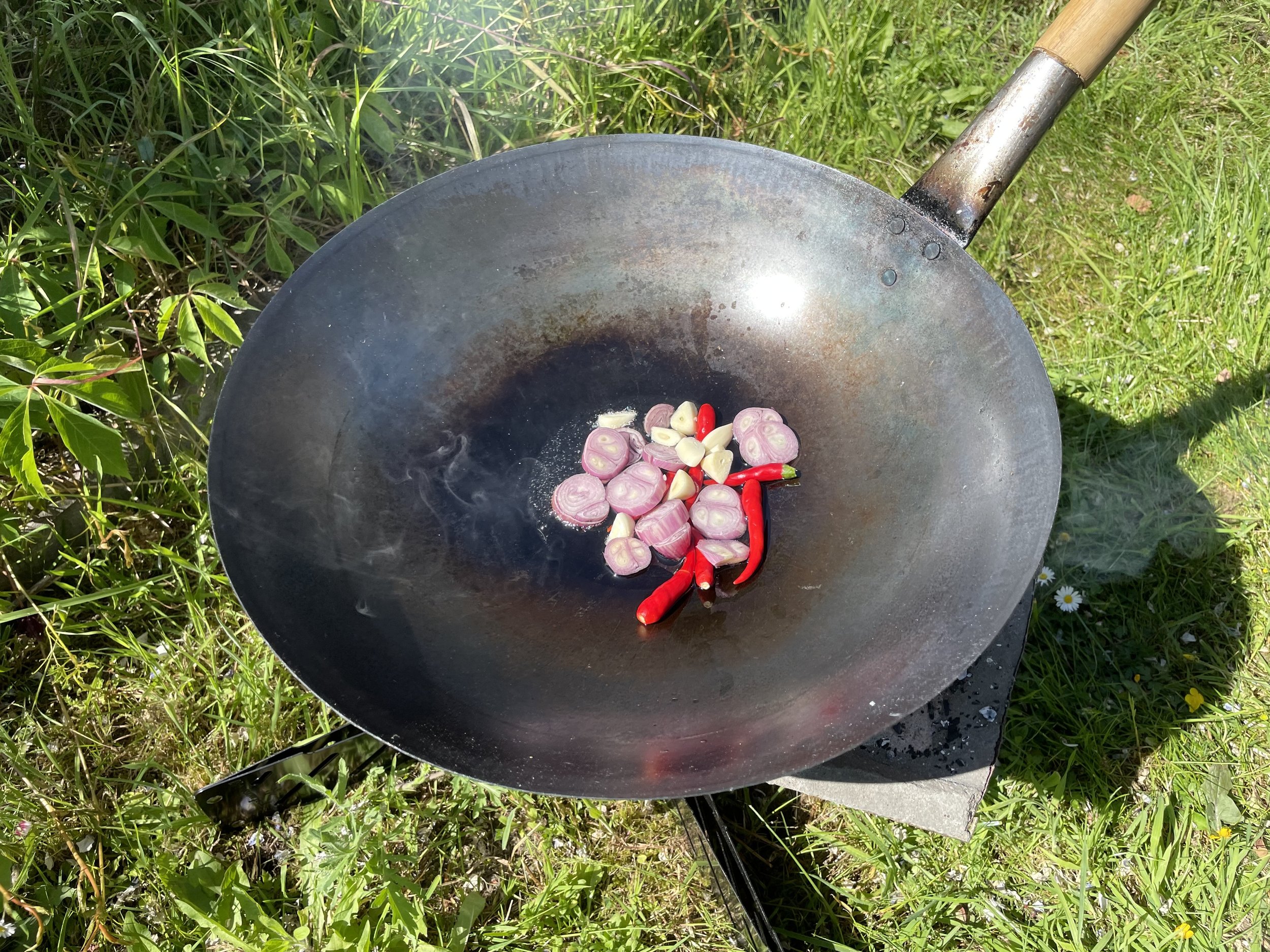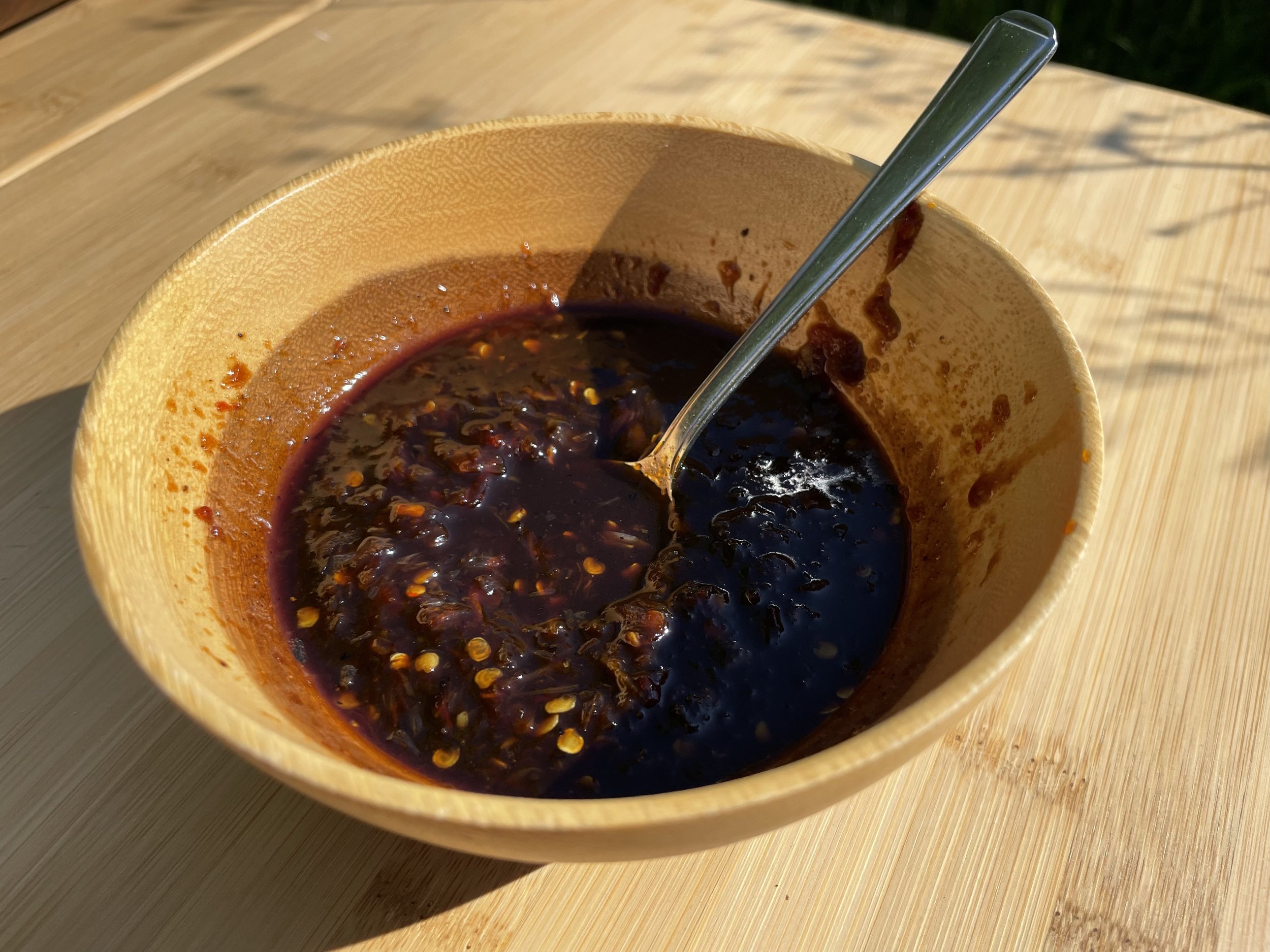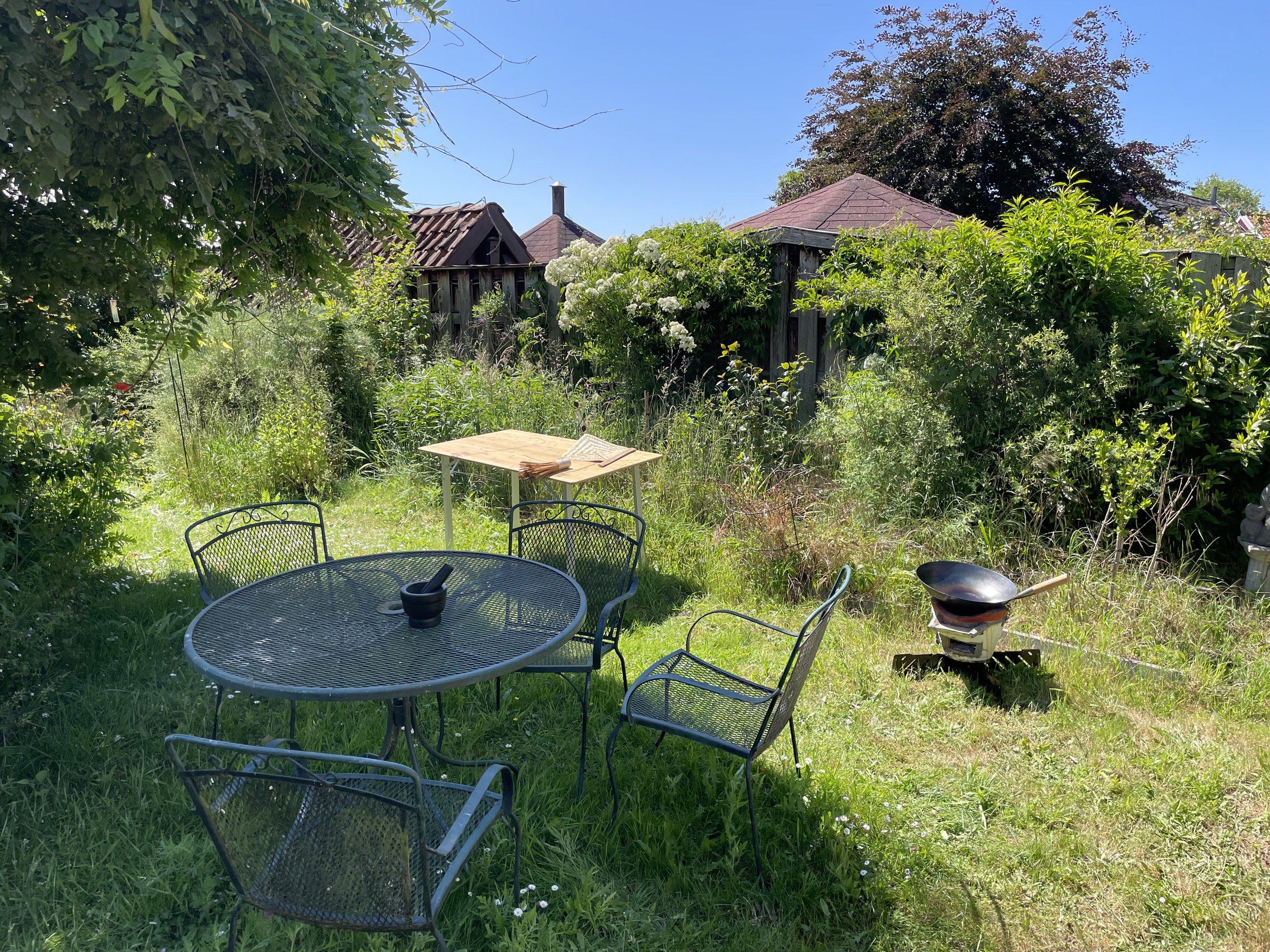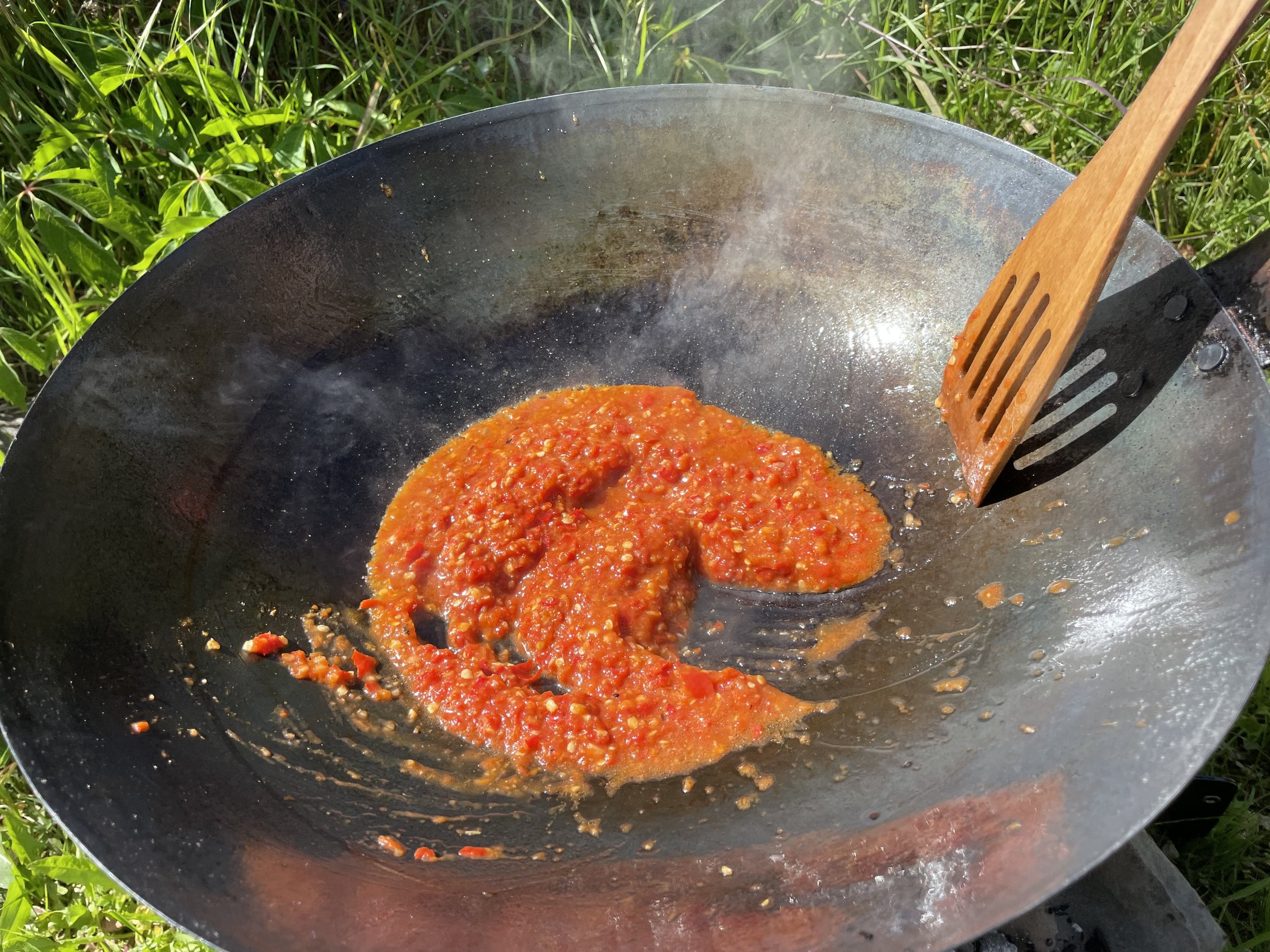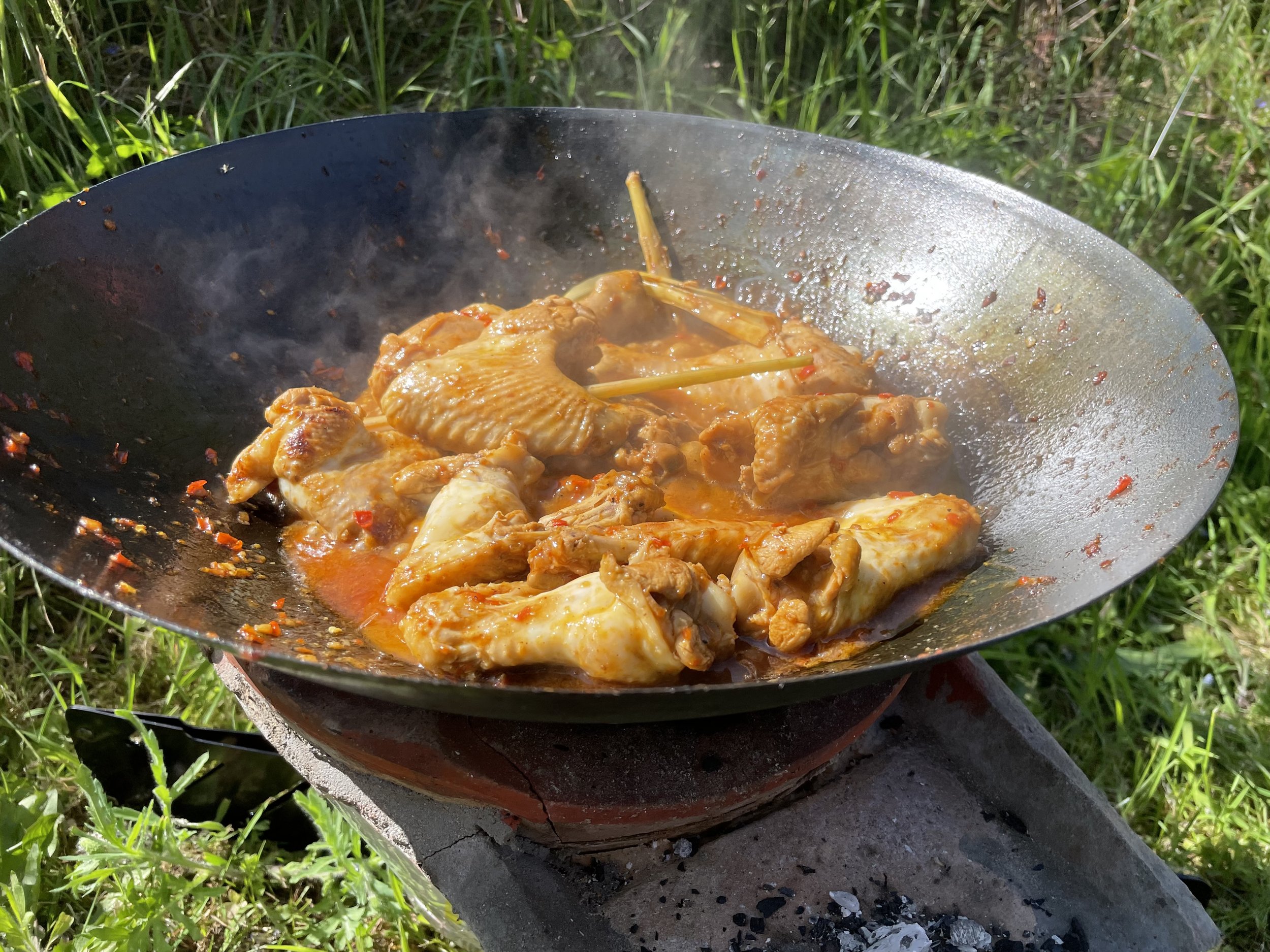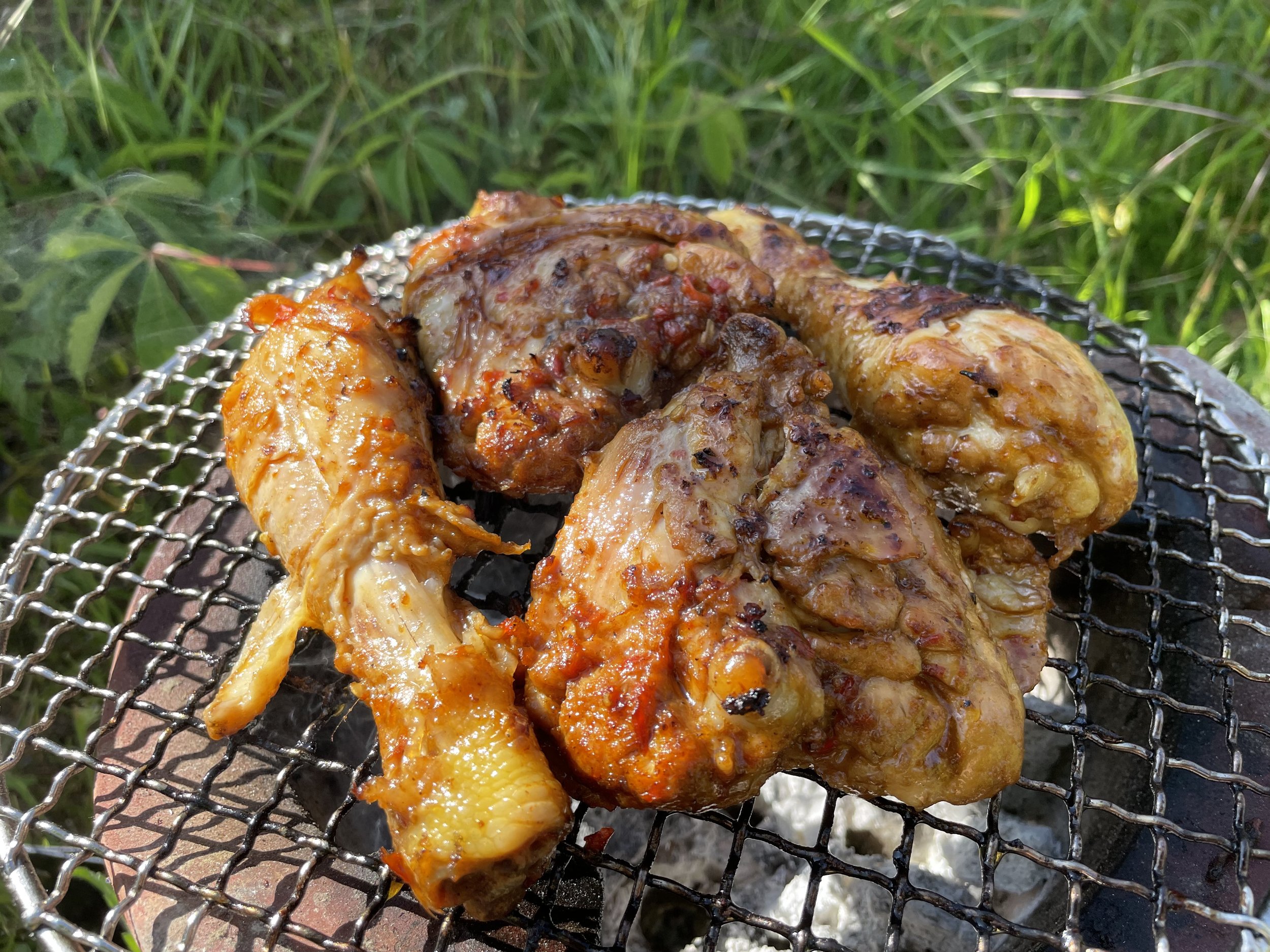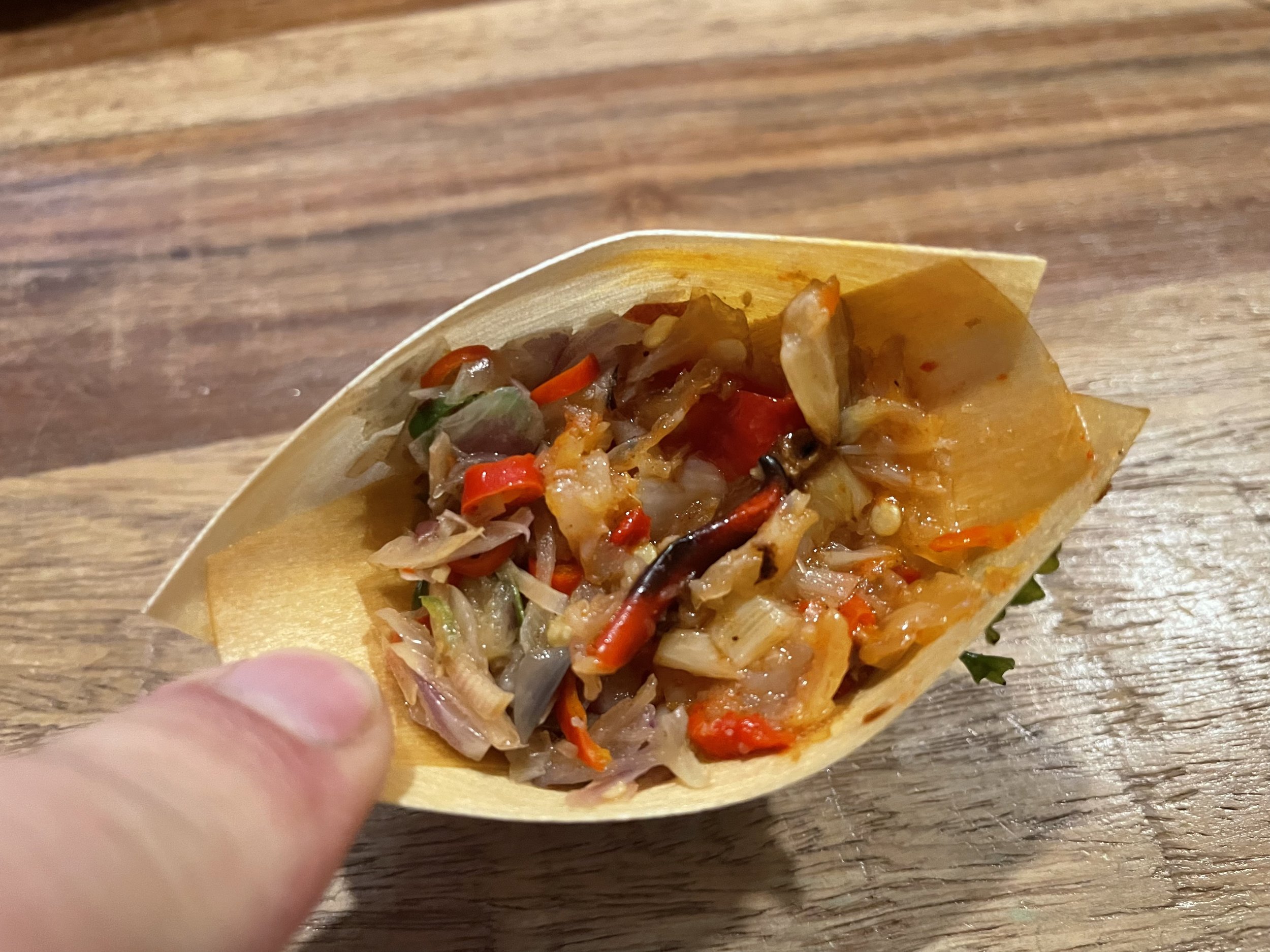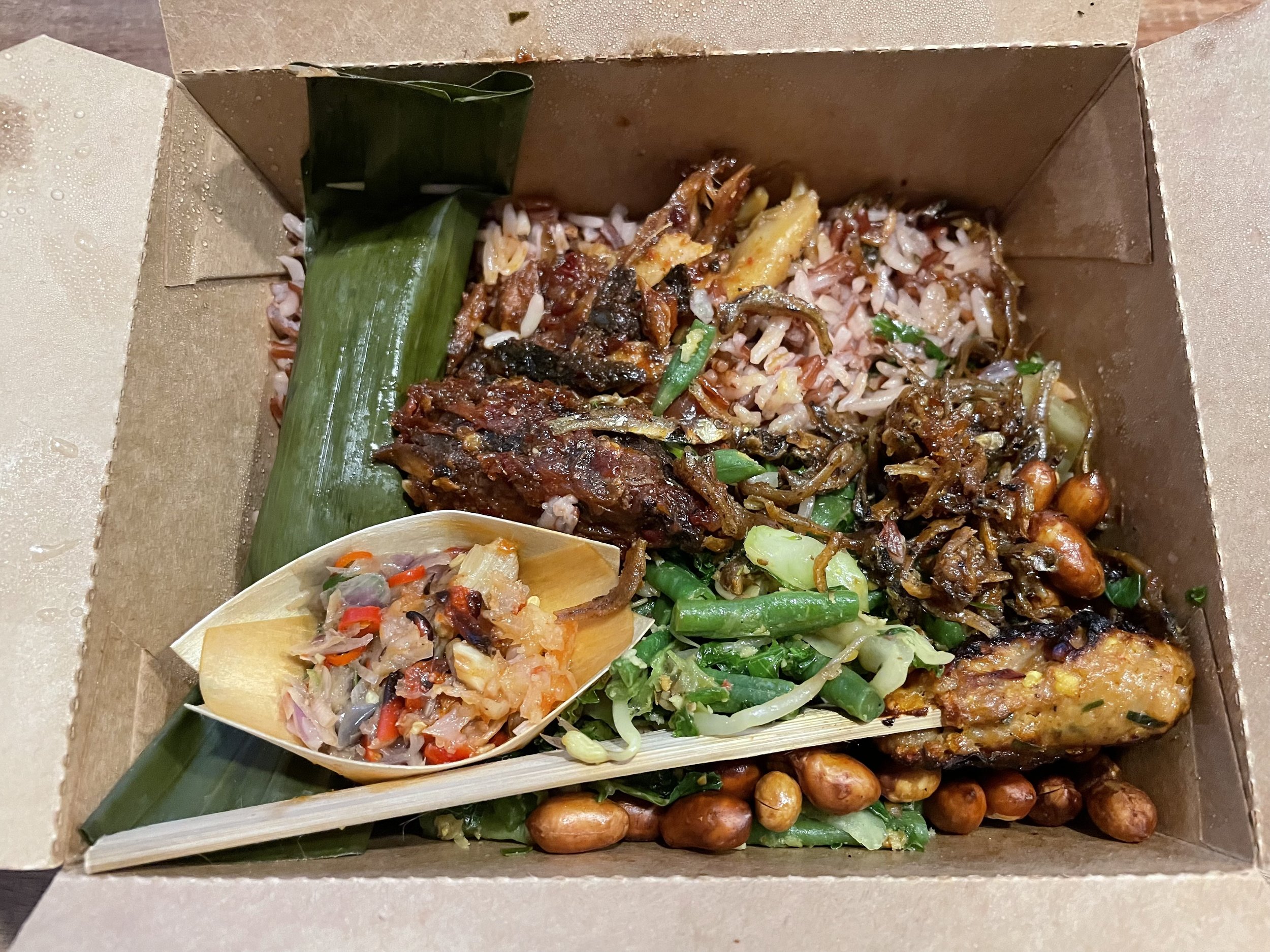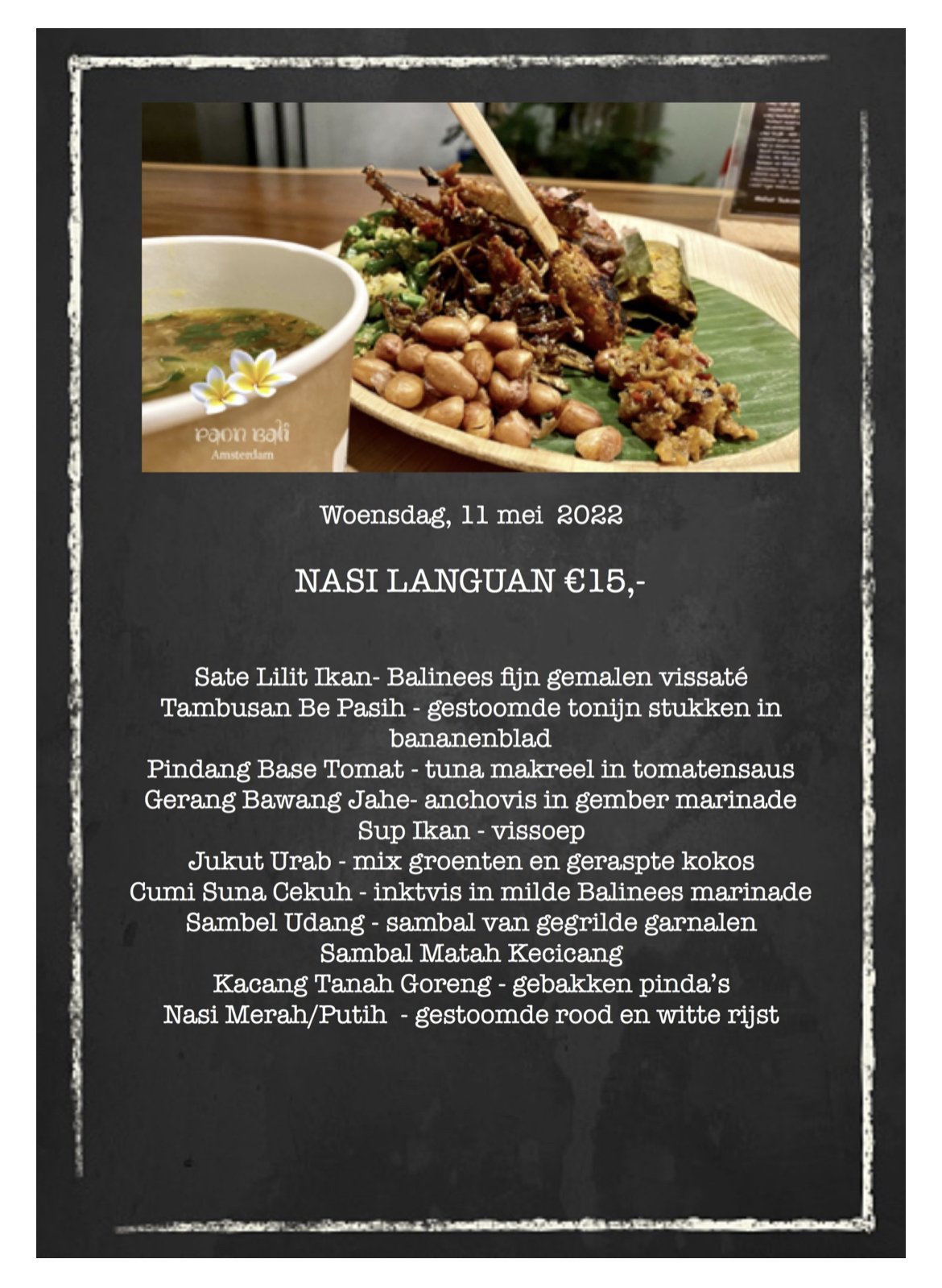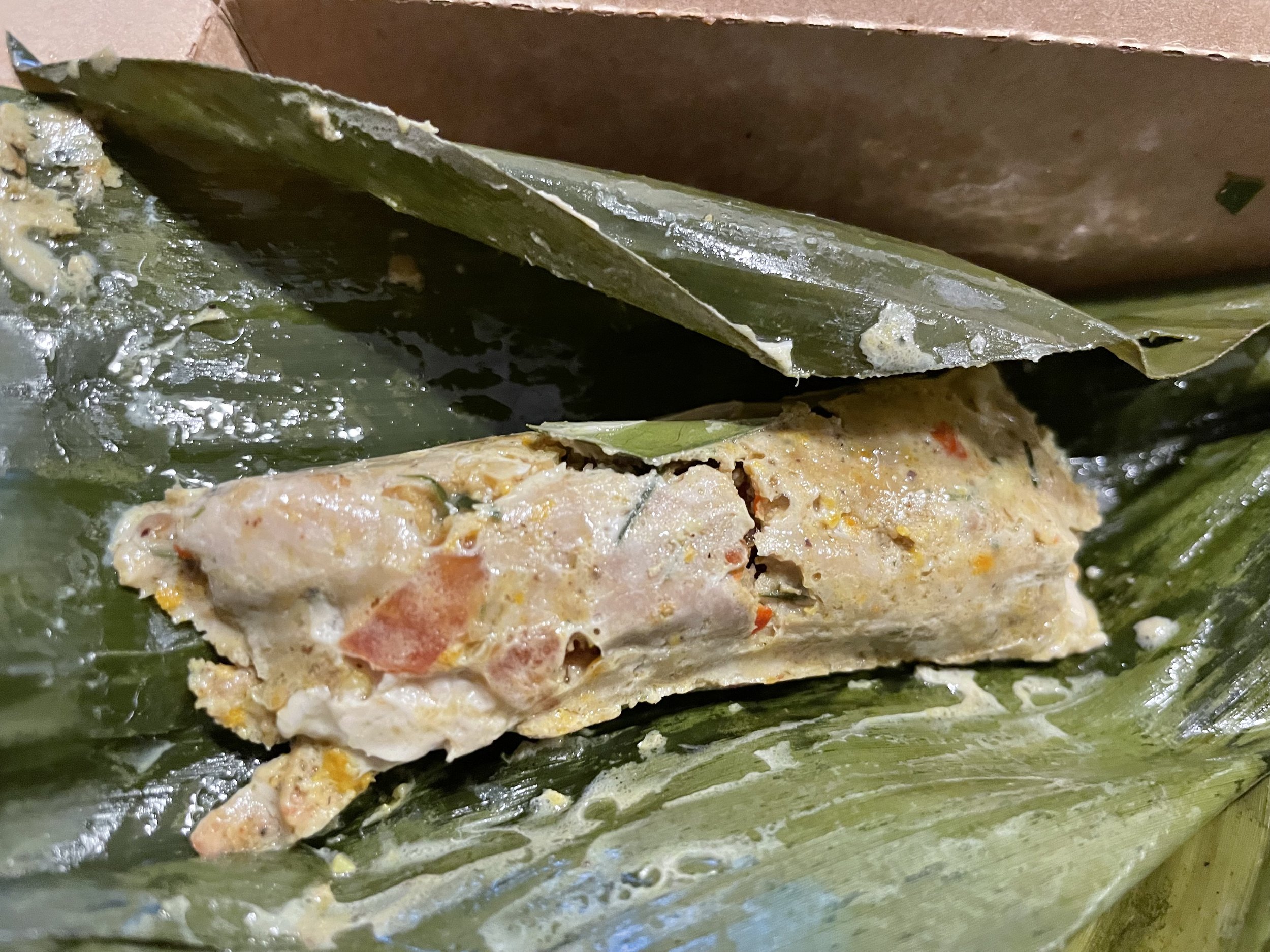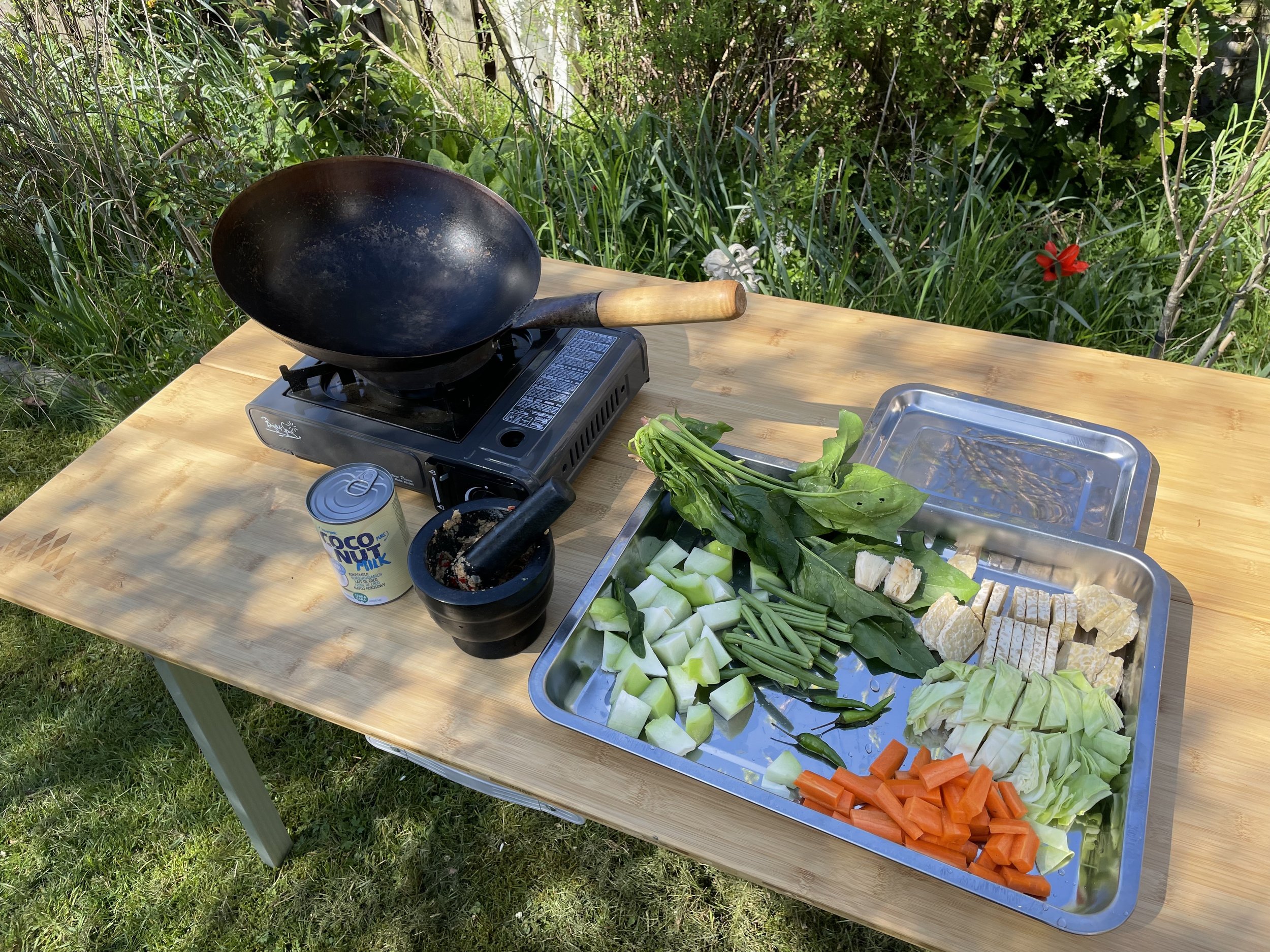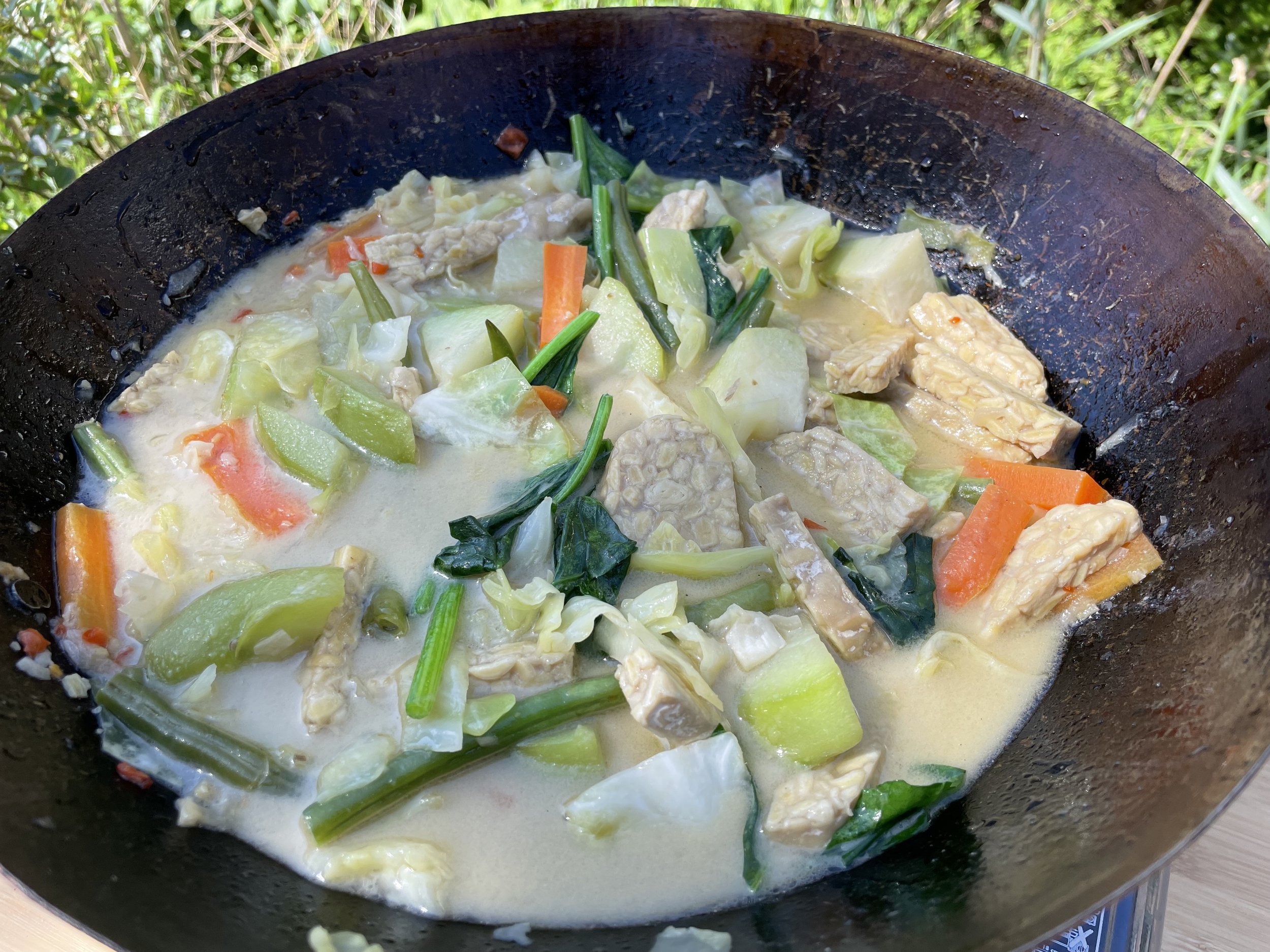江鱼仔上湯 Ikan bilis stock
Ikan bilis is Malaysian for the Indonesian ikan teri, which are dried small anchovy in English. You can make a simple stock with just a few ingredients as a basis for soups.
Soak about ten red dates in hot water and take the seed out. Quarter half a yellow onion and boil these in 1,5 liter of water.
While this is boiling soak 100 gram of dried anchovy in water to desalt the fish. Dry the fish thoroughly and fry the fish in a little oil until light brown together with a smashed piece of ginger.
Add the fish and ginger to the pot with the dates and onion and boil for no more than 15 minutes. Any longer the stock might turn bitter. Put the stock through a sieve and cool,
Mee Sua Soup 阿嫲面线
One recipe you can make with this stock is Mee Sua Soup. Mee Sua is wheat vermicelli. For this soup wheat is used instead of rice vermicelli. There are many variations on the recipe. Basically you add pork meat balls, sliced pork, pork liver, fish balls, green vegetables, like choy sum, and a raw egg into the boiling broth. For taste drip with sesame oil and Chinese cooking wine just before serving.
You must first boil the noodles separately because they are quite starchy. Just cook them for 20 seconds and rinse in cold water to remove the starch. Add the noodles to the soup after the egg is poached and the meat balls are cooked, otherwise the noodles get soggy. Vegetables are also best blanched separately first: rinse in cold water.
The pork meat balls are very easy to make by mixing minced meat with cornflour, soy sauce and some white pepper.
Garnishing: spring onion and crispy fried shallots. I discovered that frying shallot on high heat ensures crispiness but the moment between light brown and burnt only lasts seconds.














